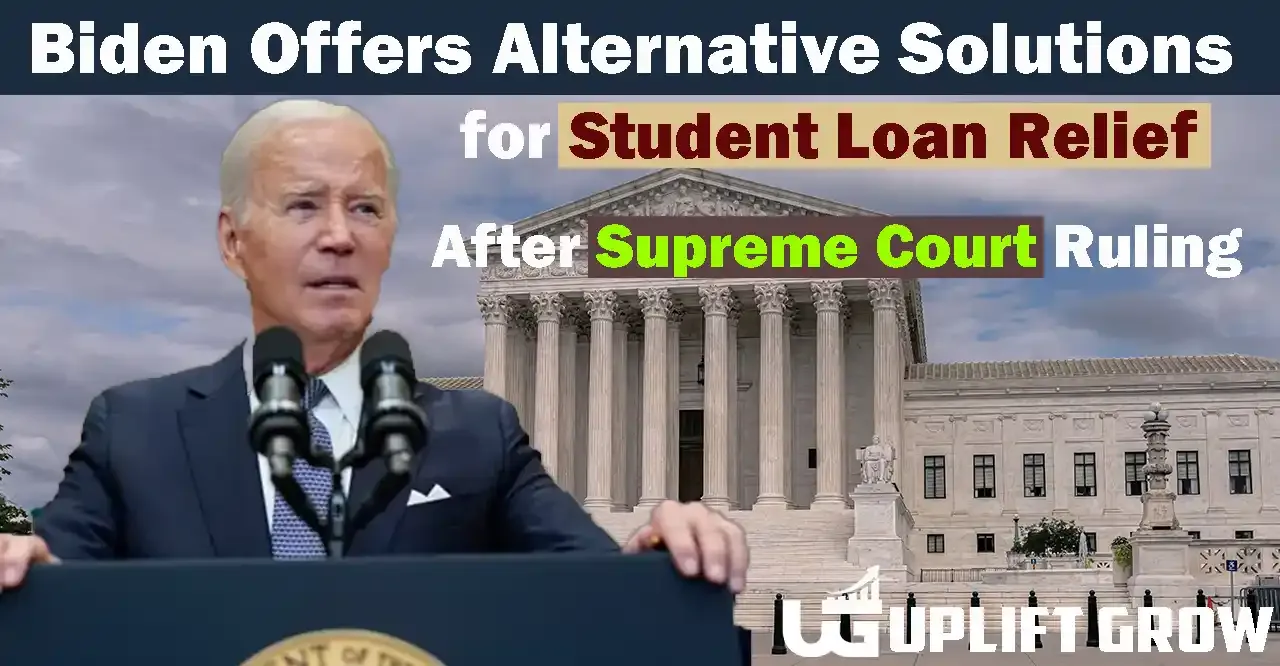White House Offers Alternative Solutions for Student Loan Relief After Supreme Court Ruling
Following the Supreme Court's rejection of the president's student loan forgiveness plan, the White House swiftly responded by presenting multiple strategies to assist borrowers. The Biden administration aims to provide debt relief by utilizing the provisions outlined in the Higher Education Act of 1965, and the regulatory process for implementing this is already in motion. Additionally, the Department of Education is developing a temporary 12-month repayment program that offers an on-ramp for borrowers. This program ensures that borrowers who may have missed payments will not face default when they resume payments in October. As a further step, the administration has finalized a new income-driven repayment plan, which is being touted as the most affordable repayment option in history. These initiatives demonstrate the administration's commitment to addressing student loan challenges and supporting borrowers.

In response to the Supreme Court's decision to strike down student debt relief, President Joe Biden expressed his disagreement, calling it a mistake. However, the administration remains determined to alleviate the financial strain faced by borrowers and has outlined a clear path forward.
During a press briefing on Friday afternoon, President Biden emphasized the commitment to providing debt relief and acknowledged that although it may take longer, it is the best remaining course of action. He reassured the public that no time would be wasted in addressing this issue.
The goal of the administration is to ease the burden of student loans on borrowers, recognizing the challenges they face. Despite the setback caused by the Supreme Court ruling, the administration remains steadfast in its commitment to supporting individuals grappling with student loan debt.
Debt relief
The Education Secretary has taken a significant step in opening up an alternative path to debt relief for working and middle-class borrowers. Through the authority provided by the Higher Education Act, the Education Department has initiated a rule-making process with the goal of providing debt relief to as many borrowers as possible, as outlined in a White House factsheet.
The Education Department has announced a virtual public hearing scheduled for July 18 and has invited written comments from stakeholders. Following the hearing, the department will finalize the necessary steps and engage in negotiated rule-making sessions later this fall.
While the White House factsheet did not explicitly state whether the Biden administration is pursuing the same forgiveness plan parameters that were struck down by the court, it did provide some insights. The previous plan involved forgiving $10,000 for individuals earning less than $125,000 and households with incomes below $250,000. Additionally, those who received need-based Pell Grants would be eligible for an additional $10,000 in forgiveness.
On-ramp repayment plan
Regarding the on-ramp repayment plan, the administration has introduced measures to support borrowers when they resume their paused payments in October. For a period of 12 months, borrowers will not face penalties for late, missed, or partial payments. No action is required from borrowers to qualify for this program.
During the 12-month period, payments will still be due, and interest will continue to accrue. However, the interest will not be capitalized at the end of the on-ramp period. It is important to note that borrowers who miss payments will not have their credit reported to bureaus, will not be considered in default, and will not be pursued by collection agencies for those payments.
While encouraging borrowers who have the means to continue making payments, the administration acknowledges the financial challenges faced by many individuals and aims to provide necessary relief.
New income-driven repayment plan
In a significant move to address the challenges faced by student borrowers, the administration has recently finalized the Saving on a Valuable Education (SAVE) plan. This new income-driven repayment plan aims to make loan payments more manageable, reduce monthly payment amounts, and prevent balances from growing due to unpaid interest.
Under the SAVE plan, borrowers will experience the following benefits:
1. Reduced Monthly Payments: Borrowers will only be required to pay a maximum of 5% of their discretionary income towards their undergraduate loans, a significant decrease from the previous 10% requirement.
2. Monthly Payment Exemption: No borrower earning less than 225% of the federal poverty level will be obligated to make monthly loan payments, providing relief to those with lower incomes.
3. Accelerated Loan Forgiveness: For borrowers with an original loan balance of $12,000 or less, loan balances will be forgiven after 10 years of consistent payments, as opposed to the previous 20-year requirement.
4. Preventing Balance Growth: Borrowers who make their payments, even if it amounts to $0 due to their low income, will not be charged with unpaid monthly interest. This crucial measure ensures that balances do not accumulate over time.
To facilitate a seamless transition, student borrowers in repayment will have the opportunity to enroll in the SAVE plan later this summer, ahead of the resumption of monthly payments. Borrowers who are already enrolled or sign up for the Revised Pay as You Earn (REPAYE) plan will be automatically enrolled in the new plan.
Education Secretary Miguel Cardona expressed the administration's unwavering commitment to supporting borrowers, stating, "President Biden, Vice President Harris, and I will never stop fighting for borrowers. We are utilizing every available tool to provide them with the necessary relief."
The SAVE plan is set to alleviate the financial burden on student borrowers and offers a ray of hope for those seeking more affordable repayment options.

